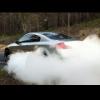Announcements
-
Similar Content
-
Latest Posts
-
yeah, that happens too. I'm really enjoying 4WDing at the moment, seen a few beautiful spots and want to go explore more of this enormous country. The 370Z got a clutch LSD in it and a track day, great fun. Getting the back end sorted out really rejuvenated my enthusiasm for driving it hard, the viscous one is poo especially in such a short and wide chassis. The VLSD unpredictability was more benign in a long and skinny Skyline.
-
With my pre/power I use a remote trigger cable(3.5mm jack each end). I turn tv on, it turns both on via ARC. Or, just the pre with the remote or its streaming software, turns on both. Not that difficult at all. Obviously, you would also want to actually update/upgrade over other factors in your life(bills, family, other hobbies, etc)
-
Yeah, nightfall was very "meh". And I'm crap at pvp, so feels like everyone has cheats(it's just my lack of skill). Final shape has been pretty good. New raid and dungeon are pretty good. If you want to give it a go, probably wait until it's on sale. But, as usual, most of it feels very familiar.
-
This morning was Kingswood's Microscopic Wars. It is the album's 10 year anniversary this year and we went to see them play the whole album as a special show a couple of months back. Was pretty spectacular.
-
By 180 wanabe · Posted
Yeah I would like to try and get a ADM car to reduce issues with insurance. I've decided if I end up getting this car I will set it up to be a sleeper build, leave it looking stock/dad spec on the outside I wonder if you can just drop in the 400r/Red/Z ECU or better still use a flashing tool to copy the map off one. Backup the factory map and then flash the 400hp cars onto the 300hp cars ECU?
-







Recommended Posts